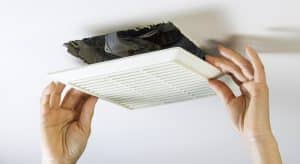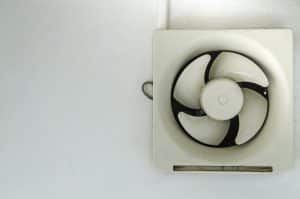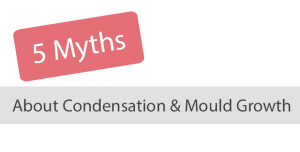Which Is Better Plastic or Pvc?
As the UK’s leading supplier of ducting and ventilation, we at I-Sells take pride in offering solutions for all of your ducting needs, as well as advising you on all things to do with ventilation, extraction, mould and everything in between.
In this article, we will be answering the question “which is better plastic or PVC?”
Ducting
Ducting can come in two forms, rigid and flexible ducting. Both can be made from plastic or metal.
Our flexible ducting hose and pipes can be used for exhausting air conditioning, venting tumble dryers, bathroom fans, HVAC systems and kitchen hoods. Available for purchase with delivery all over the UK. Custom sizes can be fabricated, and UK sales of stocked products over £100 are free of delivery charges.
Plastic ducting
Plastic ducting is usually made from PVC. It is a durable, lightweight material, generally used when installing an extractor fan or passive ventilation system to control condensation or mould growth, you may choose plastic ducting to vent to the exterior of your property too.
Plastic ducting is typically used as ventilation within domestic properties, principally within student flats and modernisations. It is preferred because of its lightness, its airtight properties & durability. It is usually used in rooms such as bathrooms and kitchens, and HVAC systems.
Our lightweight PVC coated ductwork is manufactured from high-quality uPVC and is designed to create minimal air resistance, maximum airflow and minimal pressure loss.
We provide plastic ducting lengths, connectors, bends, brackets, and accessories such as reducers, attenuators and other fittings.
Plastic ducting has a number of advantages including:
- It’s easy to install
- It’s smooth on the inside, making for efficient installations
- It is easy to cut
- It doesn’t corrode
- It can be insulated
- It is lightweight
Which is better plastic or PVC?

Which Is Better Plastic or PVC
Plastic
Traditional plastic, known as polyethylene. this is the most common type of plastic. It was industrialized in 1939 and is primarily found in packaging, including plastic bags, films, and bottles. it comes in many different forms and is very versatile.
Polyethene has low strength, hardness, and rigidity. It makes up for that by having high ductility (the ability to be stretched into wire) and impact strength (the ability to withstand a suddenly applied impact).
Polyethene absorbs almost no water, and gas and water vapours have a tough time permeating it. When exposed to sunlight for extended periods, PE can become brittle.
PVC
Polyvinyl chloride, known as PVC has a high hardness and mechanical strength, meaning it is very strong. Because it has polar elements to its composition, it has worse insulation than other plastics, such as polyethylene.
PVC is extremely chemical-resistant, able to withstand acids, salts, bases, fats, and alcohols. For this reason, it is often used in sewage piping. It is even resistant to some solvents, such as fuel and paint thinners, but some may damage it. PVC can be used for home siding and gutters, skiing equipment, medical tubing, and much more.
So which is better for ducting?
Considering a majority of ducting is made from PVC, it is the superior option, however, this does vary in accordance with your needs. But generally, PVC is the way to go unless you are opting for metal ducting.
Round or flat – Plastic ducting options
Round Pipe:
Round ducting has the highest airflow performance, this is due to a wider diameter increasing its free area. The lack of corners also decreases resistance within the pipe, which allows for higher airflow rates and higher rates of ventilation.
It is recommended for most applications where space is available for installation. Its main purposes are for long ducting runs, whole-house ventilation systems, HVAC systems, bathroom, toilet and utility room extract fan venting, or any occasion where high rates of extraction are required.
Round PVC ducting pipe can be used for venting exhaust odours and steam from cooker hoods, although flexible ducting may be easier to install in many instances.
Sizes are available from 100mm, 300mm, 500mm and 600mm diameters, with sizes between these dimensions also available. Both round and flat ducting have smooth inner surfaces to reduce air resistance and noise.
Pros & Cons of Round Ducting
Pros: | Cons: |
High Airflow | Difficult to conceal |
Less friction | Poor results in low-pressure systems |
Lightweight | More expensive than flat ducting |
Corrosion-resistant | |
Better for high-pressure systems | |
Designed for HVAC systems |
Flat Channel Duct:
Flat channel ducting is ideal when a low profile is required due to lack of space. It can also be concealed and flush fit against ceilings and walls or within voids.
Please bear in mind that as a result of a lower free area, there is greater pressure created within a duct run. It is therefore essential that you check the manufacturer information for the fan you are planning to install within the run.
If the fan is extracting at a rate that is greater than the duct run can cope with, there is potential for the fan to overheat and burn out. This is both costly and unnecessary.
Flat channel plastic ducting is generally used for installations requiring low extraction rates such as bathrooms, toilets, and utility rooms. Sizes available from 110x54mm to 310x29mm.
Pros & Cons of Flat Channel Ducting
Pros | Cons |
Corrosion-resistant | Creates more noise within duct run |
Lightweight | Poor results within high-pressure systems |
Easy to flush fit and conceal | Increased air resistance |
Ideal for low-pressure applications |
Be mindful of where you place your ducting in order to understand what kind of ducting you need, and where it’s access doors will be, which are vital in order to maintain the effectiveness of your ventilation by cleaning the ducting buildup at regular intervals.
Can I cut plastic ducting?

Which Is Better Plastic or PVC
Yes, if choosing to install your plastic ducting yourself, you can cut the ducting.
If your pipe or flat channel needs to be cut, after measuring and marking with a pencil, use a table saw (mitre saw) to get a straight and neat cut through your PVC pipe. If you do not have access to a table saw, a hacksaw can be used.
Ensure when using a hacksaw you keep the cut as straight as possible. Using a pipe vice and a smooth controlled action on a handsaw will help you to achieve this.
If your cut is crooked, you will have a much harder time correctly joining lengths of pipe to each other or connecting parts. You will also find that pressure loss is a real issue.
Once you have your cut pipe, rub-down the point at which you made the cut with coarse sandpaper to give yourself a smooth surface to work with. Much like with cutting crookedly, if your cut is not clean, you risk pressure loss and connection issues.
Does ventilation remove mould by itself?
No. Ventilation is a preventative method and will not get rid of mould that has already grown, in order to do that you need to remove or prevent the mould.
At I-Sells, we are here to help you combat the scourge of mould with the solutions that we offer, here are some options available in our mould control section.
It is our responsibility to clarify that even though these products will help you get rid of mould, it will still come back if you neglect the maintenance needed to have a mould-free environment.
Although our products will eliminate mould, if the source of the mould is a result of a leak or housing damage, the mould will return at some point. We urge you to deal with any leaks or damages along with treating mould.
Here for your ducting needs – I-Sells

Which Is Better Plastic or PVC
We at I-Sells endeavour to make sure our customers have all the information they need before making the choice to invest in our products. Be sure to visit our blog page to gain knowledge on the wide array of factors and issues surrounding ventilation, mould, condensation, and much more. We hope to have helped you by answering the question “Which is better plastic or PVC?”
We understand you may have more questions, Please do not hesitate to contact us for more information with regard to ventilation in your kitchen. If you’d like to send us an email, click here. For other contact options, see below:
Call us on 020 8463 9696
Visit us at our showroom:
*OPENING TIMES*
Monday – Friday: 8:00am to 17:30pm
Saturday: 9:00am to 12:00pm
Sunday: Closed
15 St John’s Parade
Sidcup, Kent
DA14 6ES
United Kingdom





























Add comment
You must be logged in to post a comment.